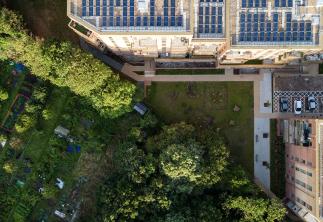
Energy 101
Great Britain has one of the world's oldest, most complex electricity systems. Every year, we move 300 Terawatt hours (TWh) of electricity around our system, which is like four trillion kettles boiling at the same time. Our world-class engineers are working to create a zero-carbon energy system of the future.
Discover how we’re balancing energy supply to meet demand, including information on power cuts, electricity pricing and how you can reduce your usage.

Why is energy important to you?
We rely upon our energy system, 24/7, 365 days a year. Our lives are intertwined with the flow of energy, regardless of the time, date or location. We all use energy in one form or another as part of our daily routines. In fact, we often take it for granted.
We need energy in our homes, at our workplaces and for travelling. Energy powers everything that’s important to us – connecting us to each other both in person and virtually.

What does the energy system do for Great Britain?
The energy system provides a strong, secure and dependable foundation for our society and economy. It powers vital services such as schools, hospitals and businesses, and is required for the operation of other utilities beyond natural gas and electricity, including water.
Energy is a driving force for growth, productivity and innovation across the economy in closely related sectors such as transport, agriculture, construction, financial services, information technology, telecommunications, waste, and many more. The transition to a cleaner energy system creates a significant opportunity for job creation and investment in green skills.
What are the parts of the energy system?
The current energy system encompasses everything from energy production to consumption. Our sources of energy include renewables, fossil fuels and nuclear, and using these sources, electricity is generated in power plants. Natural gas, a fossil fuel, is used directly for heat, cooking and industrial processes.
We currently have two networks which are fundamental to transporting our energy – overhead and underground cables transport electricity and underground pipes transport natural gas. Since gas-fired power stations use natural gas to generate electricity, they connect to both networks.
High-voltage electricity networks and high-pressure gas networks provide the bulk transport of our energy and are known as transmission networks. Most energy consumers, including households, are connected to the low-voltage and low-pressure distribution networks.
The role of electricity distribution networks is evolving as increasing numbers of small generators connect to them and consumers adopt low-carbon technologies, such as electric vehicles, heat pumps, domestic batteries and domestic solar panels.
Consumers, including households and industry, can offer flexibility in their demand for energy, and this will see them play a more active role in the future energy system. Flexibility in both supply and demand will become a fundamental part of energy system operation.
Hydrogen is an emerging form of energy, which offers opportunities for hard-to-decarbonise sectors, such as aviation and heavy industry, to lower their emissions and could provide flexibility for the electricity system. There are many ways to produce hydrogen and the process with the lowest emissions (electrolysis) requires large amounts of electricity from clean sources, such as renewables.






